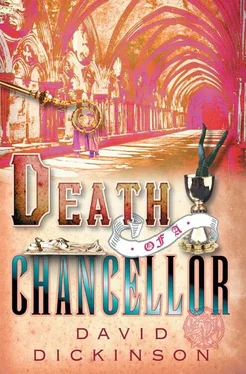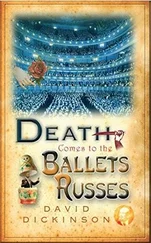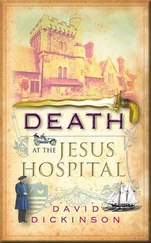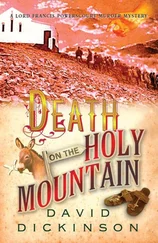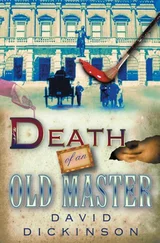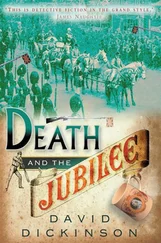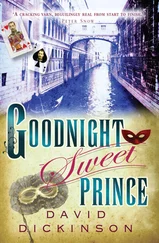David Dickinson - Death of a Chancellor
Здесь есть возможность читать онлайн «David Dickinson - Death of a Chancellor» весь текст электронной книги совершенно бесплатно (целиком полную версию без сокращений). В некоторых случаях можно слушать аудио, скачать через торрент в формате fb2 и присутствует краткое содержание. Жанр: Исторический детектив, на английском языке. Описание произведения, (предисловие) а так же отзывы посетителей доступны на портале библиотеки ЛибКат.
- Название:Death of a Chancellor
- Автор:
- Жанр:
- Год:неизвестен
- ISBN:нет данных
- Рейтинг книги:4 / 5. Голосов: 1
-
Избранное:Добавить в избранное
- Отзывы:
-
Ваша оценка:
- 80
- 1
- 2
- 3
- 4
- 5
Death of a Chancellor: краткое содержание, описание и аннотация
Предлагаем к чтению аннотацию, описание, краткое содержание или предисловие (зависит от того, что написал сам автор книги «Death of a Chancellor»). Если вы не нашли необходимую информацию о книге — напишите в комментариях, мы постараемся отыскать её.
Death of a Chancellor — читать онлайн бесплатно полную книгу (весь текст) целиком
Ниже представлен текст книги, разбитый по страницам. Система сохранения места последней прочитанной страницы, позволяет с удобством читать онлайн бесплатно книгу «Death of a Chancellor», без необходимости каждый раз заново искать на чём Вы остановились. Поставьте закладку, и сможете в любой момент перейти на страницу, на которой закончили чтение.
Интервал:
Закладка:
There, thought Powerscourt, is the world’s difference between the scholar and the journalist. For Patrick Butler, surely more or less the same age as Jarvis Broome, not finishing an article, not finishing all the copy for his paper would be professional suicide. For Jarvis Broome, finishing too soon, finishing without having read all the available material, finishing without coming to a considered judgement, would leave him open to the savagery of his peers.
‘I should explain, Mr Broome, that I am investigating a series of murders in a cathedral, Compton to be precise. They are about to celebrate one thousand years of worship in the cathedral, or the abbey, as it was, this Easter Sunday.’
Powerscourt did not give the young scholar any details of how the murders had been committed. ‘What I would like to know,’ he went on, wondering how long it would be before Jarvis Broome had a shelf full of his own books like Gavin Brooke, ‘is how much opposition there was at the time. Not so much to the question of the King’s divorce and the establishment of Henry as Supreme Head of the Church of England, as to the Dissolution of the Monasteries.’
‘Now that is a most interesting question, Lord Powerscourt.’ The young man got up from his chair and began pacing up and down the room, in exactly the same fashion, Powerscourt noted wryly, as he had done when writing his history essays over twenty years before.
‘I’ll try to be brief, Lord Powerscourt. I could go on all day about this. Let me say, as a preamble, that history is always written by the victors, as I am sure you know. I am certain that there was much more opposition to the various moves in the course of the Reformation than we know about. Some of the opposition will have fallen away, like water through a colander, as it were, and we shall never recover it, we shall never find out about it at all.’
A pair of college gardeners were trimming the edges of the lawns outside. Through the slightly open window Powerscourt could hear a couple of thrushes singing happily in the Fellows’ Garden on the other side.
‘Three points, I think, are worth considering,’ said Broome. Powerscourt suddenly remembered the angry complaint of a fellow undergraduate of his, also studying history, but with a different tutor. ‘Is it because bloody Gaul was divided into three parts?’ he had said bitterly. ‘Every time I take an essay to the wretched man there are always three points to be considered. Why not two, or four or five, maybe even seven? Why not just one, for God’s sake? Why is it always three?’
‘The Pilgrimage of Grace,’ Jarvis Broome went on, ‘1536. This was a mass rising of the North of England against the King’s policies, against his advisers, of course, rather than against the King himself. There were many reasons for the revolt, some to do with taxation, some to do with personal jealousies, the usual sort of mixture, but the principal reason was religious. The rebels objected to the changes that had taken place and the further changes they knew were coming, including the Dissolution of the Monasteries. They didn’t want a Protestant Reformation. They wanted to keep a Catholic England. The banners and the symbols tell the story. They marched behind banners of the Five Wounds of Christ, which showed a bleeding heart, sometimes a Host, above a chalice, both surrounded at the corners of the illustration by the pierced hands and feet of Christ on the cross.’
‘What happened to them?’ said Powerscourt.
‘They made the great mistake of trusting the King’s word,’ Broome replied. ‘At one stage they could have marched to London and toppled the Tudors from their throne. But they were picked off bit by bit by duplicity and double dealing. The ring leaders were all executed.’
‘How?’ said Powerscourt suddenly.
‘Most of them were beheaded. Their heads were left stuck in prominent places in the towns and cities where they came from. Anybody who tried to cut them down was liable to meet the same fate themselves.’
Patrick Butler had fallen silent as they peered at the ruins of the Lady Chapel in the ruins of Glastonbury Abbey. He had felt in his pocket for the three proposals he had written out. None of them felt quite right at this moment. He found that his brain had delivered to him a newspaper headline that seemed to sum up his predicament. Editor Lost For Words.
Anne Herbert thought the ruins of the Lady Chapel looked remarkably similar to the ruins of the nave and the high altar. Try as she might, she couldn’t see much difference. She hoped her children were behaving themselves with their grandmother.
‘They say King Arthur and his knights lived round here, Anne,’ said Patrick, recovering his powers of speech. ‘He came with a great army to rescue Queen Guinevere who had been imprisoned by his enemies in a castle on the tor.’
Anne Herbert tried to imagine Patrick as a Knight of the Round Table, Sir Galahad or Sir Lancelot or Sir Bedevere. She couldn’t manage it. A monk perhaps, creating a Book of Hours or copying out the Gospels with occasional rude asides in the margins, yes, but mounted on horseback and riding into battle, no.
‘Would you have liked to live in those times, Anne? Handsome young men on horseback pressing their suits?’
‘I think I might have been the Lady of Shalott,’ said Anne, ‘floating down to Camelot behind that rotting barn over there.’ Privately she felt that the knights would have said their piece by now, proposals of wedlock delivered from behind a visor in sub Tennysonian verse, the suitor clanking on bended knee before her.
‘I don’t think I’d have liked it much then,’ said Patrick. ‘Life can’t have been much fun for a humble scribe. I tell you what,’ he said, postponing things yet again, ‘why don’t we have lunch and then climb to the top of the tor.’
‘What most historians have not realized up until now,’ Jarvis Broome was back sitting at his desk, ‘is the link between the violence, the savagery of the repression of the Pilgrimage of Grace in 1536 and the comparatively peaceful passage of the Dissolution of the Monasteries two or three years later. You can read many history books, Lord Powerscourt, which fail to make to make any link at all between those two facts. Previous historians talk blithely about how the acceptance of the Dissolution shows the monasteries were known to have been corrupt, or were not loved by the people. In fact the people were terrified by the reprisals handed out to the northern rebels. They were too frightened to risk their necks by opposing the end of the abbeys. I regard it as a complete failure of historical imagination and I hope to put the record straight.’
Powerscourt thought that mutual co-operation and brotherly love between the practitioners of the historian’s craft was not going to get any better.
‘Do we know how many people did oppose the Dissolution? And do we know what happened to them?’
‘I fear,’ said Jarvis Broome, ‘that they were all executed. It is difficult to be precise about the numbers as the records have often been lost. Some of the Northern abbots were believed to have fled south to join their colleagues in other monasteries. They too were put to death.’
The sun had gone in while Anne Herbert and Patrick Butler ate their modest lunch in the George and Pilgrims Hotel. There was a wind rising as they set off out of the town towards the path that led to the summit of Glastonbury Tor, a round hill rising some three hundred and fifty feet above the surrounding plain.
‘I came here when I was eleven or twelve with a history master from school, Anne,’ said Patrick as they reached the path that led to the summit. ‘Long ago, all this plain was water, it was the lake of Avalon. We had to learn bits of the Idylls of the King to declaim when we reached the top.’
Читать дальшеИнтервал:
Закладка:
Похожие книги на «Death of a Chancellor»
Представляем Вашему вниманию похожие книги на «Death of a Chancellor» списком для выбора. Мы отобрали схожую по названию и смыслу литературу в надежде предоставить читателям больше вариантов отыскать новые, интересные, ещё непрочитанные произведения.
Обсуждение, отзывы о книге «Death of a Chancellor» и просто собственные мнения читателей. Оставьте ваши комментарии, напишите, что Вы думаете о произведении, его смысле или главных героях. Укажите что конкретно понравилось, а что нет, и почему Вы так считаете.
